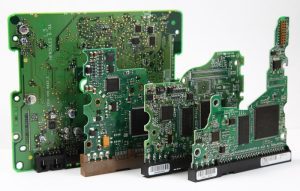In the intricate world of PCB manufacturing, ensuring the quality and reliability of fabricated boards is of utmost importance. PCBs serve as the foundation for countless electronic devices, ranging from smartphones and computers to medical equipment and aerospace systems. As such, any flaws or defects in the manufacturing process can have significant consequences, impacting functionality, performance, and even safety.
To mitigate these risks and achieve optimal board quality, manufacturers employ various techniques and methodologies. One such technique is the utilization of PCB test coupons. These additional boards, produced alongside the main PCBs, play a vital role in evaluating and validating the manufacturing process.

(nanoslavic/Pixabay)
What Is a PCB Test Coupon?
Test coupons are small sections of the PCB designed with specific dimensions and electrical properties to detect manufacturing defects. These coupons include trace widths, spacing, and impedance values, making them instrumental in quality assurance. Common types of test coupons used in PCB assembly encompass single-ended, differential, and impedance test coupons, each representing different impedance requirements of the PCB.
When it comes to placement, test coupons can either be located on the same PCB panel as the main board, typically at the edges or corners, or integrated directly into the PCB layout. While separate placement minimizes interference with signal traces, integrating test coupons provides a more accurate representation of the manufacturing process and electrical properties. However, this integration can present design challenges and potential interference.
The decision of whether to separate or integrate test coupons depends on factors such as the complexity and size of the PCB, as well as the required level of accuracy in testing.
Scope and Limitations of Test Coupons
Test coupons offer a valuable solution for PCB designs requiring complex structures, high reliability, or high-speed signal traces. Nonetheless, simpler PCB designs may suffice with alternative testing methods like in-circuit and flying probe testing.
Test coupons allow manufacturers to pinpoint defects or issues before final product assembly, minimizing the time and cost associated with debugging and redesigning a PCB. However, it’s crucial to recognize that the test environment may not precisely mimic real-world application conditions.
Disparities in scale, exposure, and stress can affect PCB performance in practical scenarios, potentially eluding detection by test coupons alone. Therefore, test coupons should be complemented by other testing approaches to ensure the utmost quality and reliability in PCB design.
What about test coupon use at high frequencies? Working with extremely high frequencies poses challenges, especially when dealing with unique materials or HDI boards. These scenarios often give rise to signal integrity issues that require careful attention. In high-speed digital systems operating in the 10s of GHz range, all test points on a standard coupon become crucial and warrant examination on a high-frequency test coupon.
Furthermore, gathering additional measurements is essential to ensure signal integrity and minimize radiated electromagnetic interference (EMI). By considering these factors, PCB designers can address the complexities associated with high-frequency designs and optimize the performance of their systems.
To Integrate or Not to Integrate?
When deciding whether to integrate or keep test coupons separate, there are key considerations to ponder. In some cases, the designer can integrate the test coupon directly into the actual PCB rather than housing it as a distinct section on the same panel. This integration may result in a test coupon that doesn’t resemble the conventional ones provided by vendors.
Although it may seem counterintuitive to allocate PCB space for test structures, integrating them directly onto the board offers significant advantages. This approach greatly facilitates in-circuit testing during both prototyping and full-scale production. Designers working with unconventional interconnect geometries can benefit from assessing impedance before moving to mass production.
By designing a single board with the desired interconnect designs and conducting in-house testing, the upfront investment in a test board pays off. It can potentially save the need for a costly board revision later by obtaining crucial measurements prior to production.
Non-impedance Uses of Test Coupons
Test structures placed on a custom-designed test coupon enable the measurement of conductor losses, interconnect impedance, propagation delay, and PDN capacitance. Additionally, these structures prove invaluable in determining the dielectric constant of the substrate laminate. As the frequency moves into the microwave and mmWave range, it becomes crucial to test for insertion loss and cavity radiation to safeguard against significant degradation of analog signals on controlled impedance lines.
Test coupons offer the opportunity to subject them to a range of tests, including reflow simulations, thermal shock, glass transition temperature measurements, and various other custom tests.
By utilizing test coupons, a PCB assembly company can assess the manufacturing process and ensure the quality of the new board, thereby meeting the required reliability standards. Results from the panels should align within a 5% tolerance of the specified values.
PCB test coupons prove to be a seamless solution for verifying the impedance values of PCBs. With identical layer stack-up and tracks as the PCBs, the holes on the coupons accurately conduct the impedance trace. This convenient setup enables the use of impedance test machines to simply plug the test probe into the coupon holes and verify the impedance value.
Achieving matched impedance values with the track lines is crucial for the proper functioning of electronics after PCB assembly. Reputable PCB manufacturers often provide impedance coupons and their corresponding test reports to buyers, ensuring a thorough quality check without any additional cost.
By leveraging impedance coupons, manufacturers and buyers can confidently validate the impedance performance of PCBs, contributing to the overall reliability and functionality of electronic systems.
